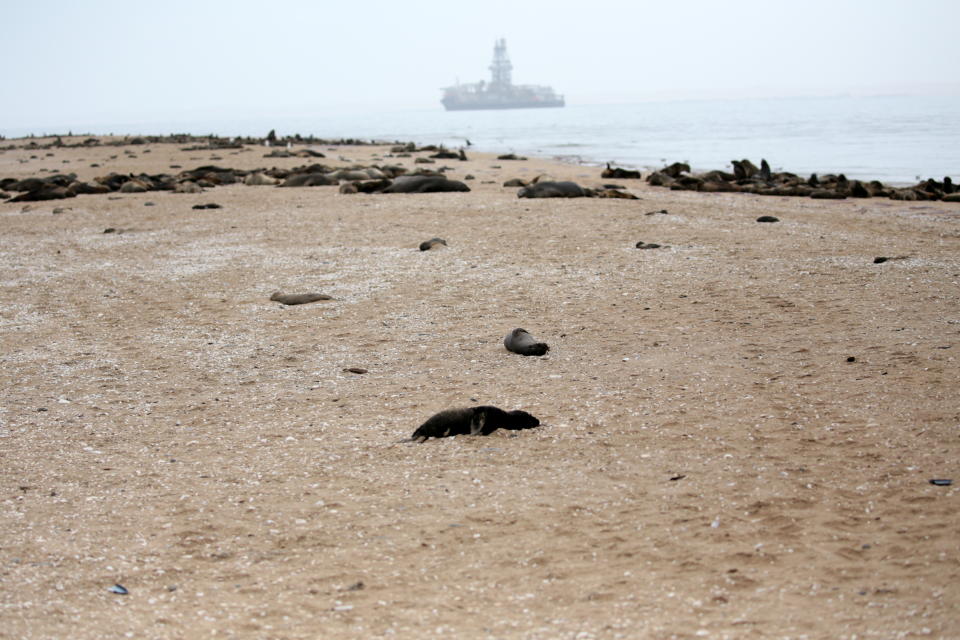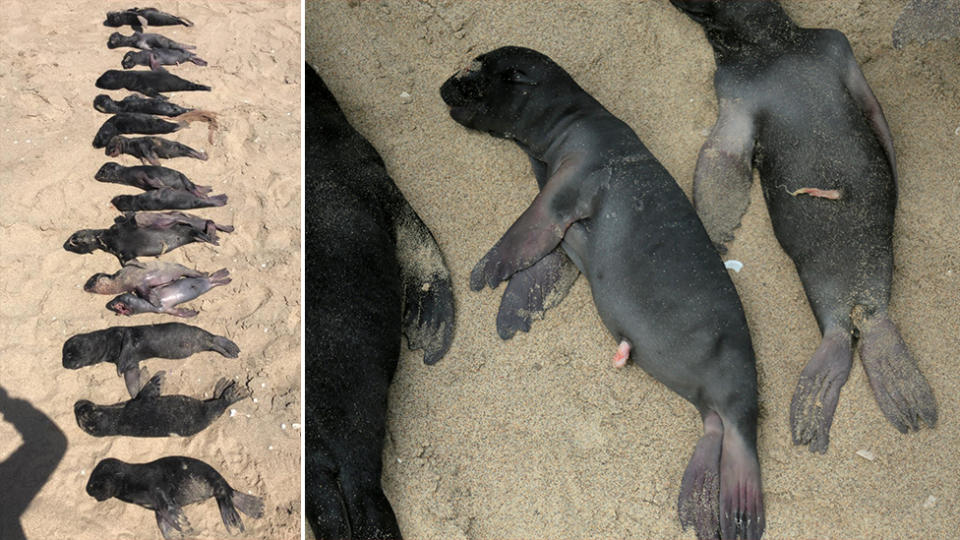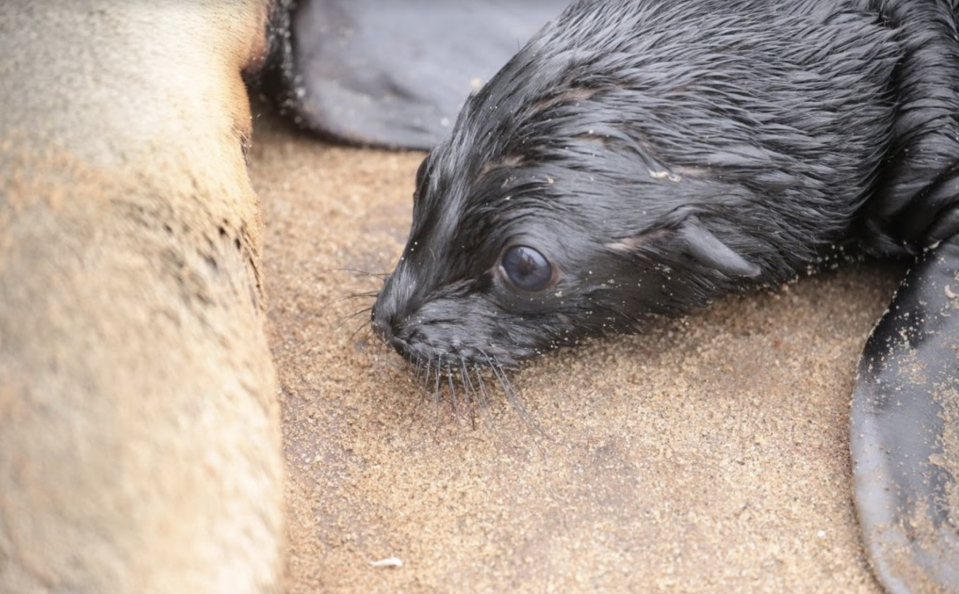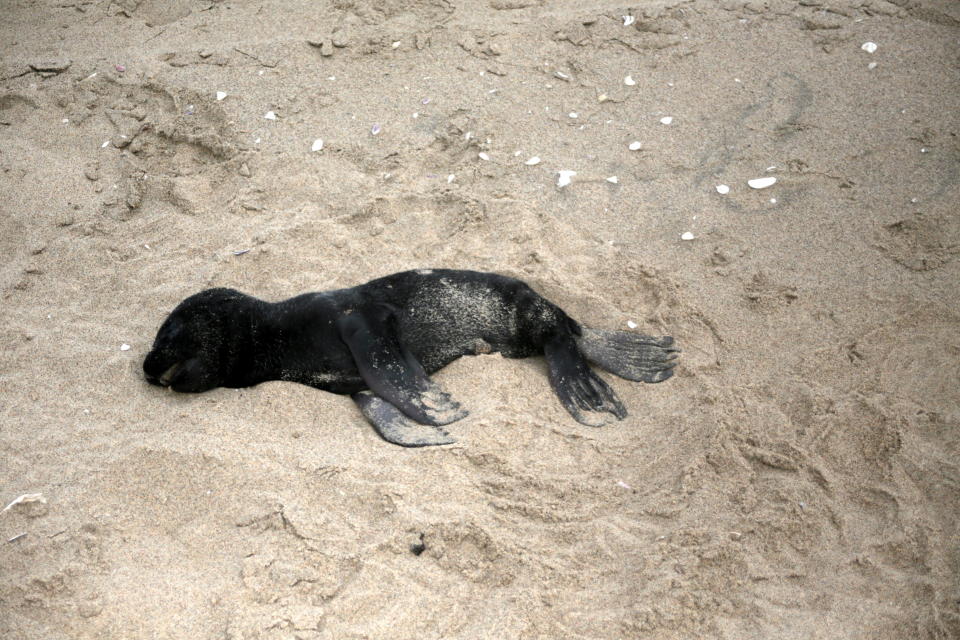Thousands of dead seals wash up on beach in tragic 'abortion storm'
An unusual mortality event among one of the world’s largest seal colonies has caused great concern among scientists.
It is estimated more than 5000 aborted Cape fur seal foetuses have washed up on Central Namibia’s Pelican Point shore over the past few months.
“I first started seeing a few dead pre-term pups in late August and a few more mid September,” Ocean Conservation Namibia’s Naudé Dreyer said in a press release issued by the organisation along with the Namibian Dolphin Project.
“A few deaths are not unusual. But last week I returned to Pelican Point and saw hundreds of aborted foetuses on one day.
“That is when the alarm bells went off.”

Concern for the whole ecosystem
Cape fur seals are native to the Namibian coastline. Usually between mid-November to early December thousands of females give birth along the coast.
Though it’s not just aborted seal pups on beaches which are alarming experts, Mr Dreyer estimated over 350 adult and juvenile seals have also died.
“This spike in deaths is far higher than normally seen and extremely worrying to both local and international experts,” the joint press release said.

Speaking to Yahoo News Australia, supervising vet Dr Brett Gardner from Australia, who is working alongside Ocean Conservation Namibia and Namibian Dolphin Project, said while it is not uncommon for seals to spontaneously abort a pregnancy, it is usually at a low rate.
“It's kind of difficult to determine what the exact rate is for the population because that means you'd have to go out and determine who's pregnant and who gives birth,” he explained.
Dr Gardner moved to Australia from South Africa three years ago and he works predominately as a wildlife vet for Zoos Victoria and conducts research into abortions at Melbourne University.
While the images of the mass die-off of seals in Namibia is concerning, he says our concern needs to extend beyond that of the seals.
He explains Cape fur seals are the most abundant marine mammal in the area and the most common apex predator.
“So, if you're seeing die off of the most common apex predator in that ecosystem, we should not just be concerned about the seals, we should be concerned about the ecosystem, because that should be flashing like really big warning lights, saying, ‘something's happened’,” Dr Gardner explained.

Cause of ‘abortion storm’ not yet known
The mass deaths could be attributed to several things, like an issue in the food chain or some sort of toxic marine algae, perhaps even the local fishing industry, though experts cannot make a judgement call until they receive some results.
Dr Gardner said the emaciated females might offer some clues.
“That would point towards at least some degree of this abortion storm that we're seeing having a nutritional component,” he said.
“And if that is the case that we need to look at what's causing a collapse within their ecosystem that's not allowing them to flourish.”

Dr Gardner said he would be very surprised if humans were not to blame for the problem.
“What we're seeing here is not a natural event this will have been caused by either us, causing collapse in the fishing industry or us doing something to that marine environment,” he said.
Namibia’s Ministry of Fisheries and Marine Resources manages the Cape fur seal population and is monitoring the situation.
Ocean Conservation Namibia and Namibian Dolphin Project are providing information to the ministry.
Covid and funding
Dr Gardner can’t fly to Namibia to assist with the efforts over there, due to the Covid-19 pandemic and he says restrictions are making it “exceptionally difficult” for those working over there to convey expertise.
Providing an update to Yahoo News Australia via email, Dr Tess Gridley from Namibian Dolphin Project said Ocean Conservation Namibia is continuing to monitor the situation at the Pelican Point Colony.
Members of the public who were at the beaches last weekend provided feedback. Dr Gridley also said there have been reports along the coast of Central Namibia of dead and emaciated adult female seals.

However, Covid is not the only challenge facing those wanting to get to the bottom of the mass deaths.
Dr Gardner explained Namibia is not a wealthy country and the testing will be costly and a burden to the organisations involved.
“So these non-profits at the moment are digging deep into their pockets to do some really expensive testing,” Dr Gardner says.
“Because a lot of these tests, you're looking at like, probably, 80 to 100 euros ($133 to $166) per foetus or per adult.”
Dr Gardner said at least 30 tests need to be carried out from colonies and testing is the best way to diagnose the cause of the mass deaths.
He added one of the most frustrating things about working with wildlife, is the inadequate funding, especially as the world is “progressively inching towards its demise”.
“The knock-on effects of this are going to be years and years because the recruitment of new seals onto the population has taken an exceptional setback,” he said.
“And people are barely aware of it.”
Financial help will benefit those working in Namibia, and both Ocean Conservation Namibia and The Namibian Dolphin Project are accepting donations.
Do you have a story tip? Email: newsroomau@yahoonews.com.
You can also follow us on Facebook, Instagram and Twitter and download the Yahoo News app from the App Store or Google Play.




